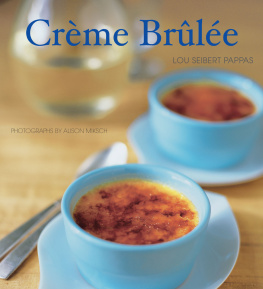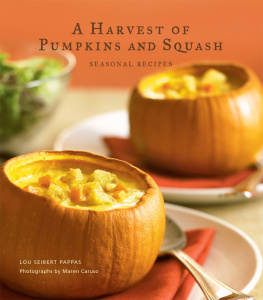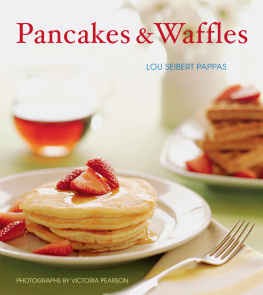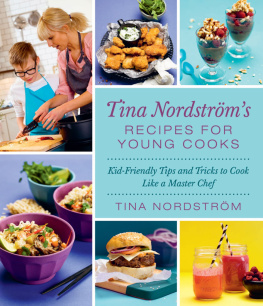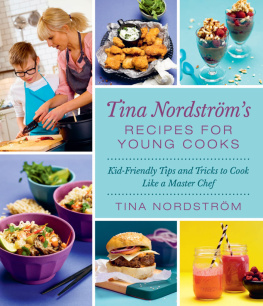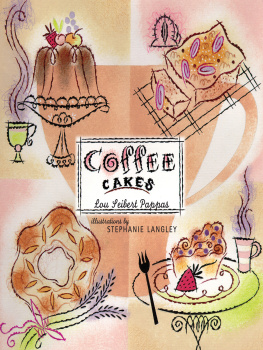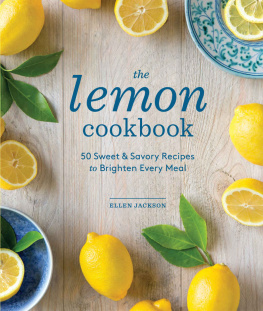WITH ITS SILKEN CUSTARD AND CARAMELIZED CRISP TOPPING , crme brle ranks as one of the most popular desserts in America. Around the globe, its innovative presence brings gustatory delight and pleasure galore as well.
The joys and rewards of making crme brle are multifold: It is quick and easy for a novice to prepare. It requires just four ingredients plus flavorings. It is elegant, luxurious, and versatile for countless dining occasions. And though its forte is mainly as a dessert, it has spawned tempting savory versions to enjoy around the clock. Savory custards can be served as first courses, side dishes, or light entres. They may be topped with cheese, bread cubes, or, for a sweet touch, a light sprinkling of sugar.
Its roots can be traced to a recipe called Grilled Cream in a seventeenthcentury English cookery book. It was first popularized in the dining halls at Kings College in Cambridge. The close Spanish relative is crema catalana, a custard imbued with lemon and cinnamon. Though they have given the dish its name, it was only in recent years that the French acquired the custom of serving crme brleor burnt cream. (Both Escoffiers Guide Culinaire and Larousse Gastronomique bypass the subject.)
The preparation is a short two-part procedure. First, the rich custard mixture is prepared and baked. Sweet versions are then chilled, while savory ones are ready immediately. Then the top is caramelized. A butane gas blowtorch with a powerful approximately 2700F flame neatly browns the surface without reheating the custard or its container. By contrast, a broiler readily sears a battery of dishes at once and also warms the contents.
For the cook, the roster of flavors is boundless. Aromatic spices and fresh or dried herbslavender, basil, ginger, lemongrass, chiles, and kaffir lime leavescan scent these custards. Various liqueurs and liquors, Mexican chocolate, and a bevy of sugars lend intrigue.
As your family and guests tap through the caramel-sealed top to relish the rich, velvety interior of these custards, compliments will abound. This collection of tantalizing recipes offers taste-tingling surprise and delight.
Cream: The classic cream for crme brle is heavy (whipping) cream, containing 36 percent butterfat and readily available in half-pint and 1-pint containers in grocery stores. It contains the proper amount of butterfat. When you add rich ingredients, such as cheeses in savory recipes or chocolate in dessert recipes, you may choose to lighten the fat content by replacing some of the heavy cream with half-and-half (10.5 percent butterfat) or light cream (18 percent). The substitution of all half-and-half or milk for the cream results in a dish similar to a regular baked egg custard rather than a rich crme brle.
Sugar: For sweetening the custard, fine granulated or light brown sugar is usually the preferred choice. For caramelizing the top, many options abound: superfine sugar, regular granulated sugar, confectioners sugar, light or dark brown sugar, or raw sugar such as demerara or turbinado. Shaved piloncillo, a Mexican brown sugar, yields a delectable molassesstyle topping.
Eggs: Grade-A large eggs are the traditional choice for recipes and were used in testing. It is important to keep eggs refrigerated and to check the date on the carton to ensure freshness. The proportions used in this book are 6 egg yolks to 2 cups of cream. When rich ingredients such as chocolate and cheese are added, the number of yolks is sometimes reduced.
Flavorings: Vanilla beans, with their tiny black flavor-packed seeds, lend more flavor than vanilla extract when vanilla is the primary flavoring, yet pure vanilla extract is a desirable complementary addition to other flavorings in many recipes. Liquors and liqueurs are superb enhancers. Choices include brandy, Cognac, Calvados, dark rum, tequila, and liqueurs such as Grand Marnier, Triple Sec, Kahla, amaretto, framboise, and Poire William.
Herbs and Spices: Lavender, lemongrass, ginger, kaffir lime leaves, basil, chives, tarragon, and dill lend a special touch to sweet and savory crmes brles.
Fruit: Practically any fruit can be used in a crme brle, with the exception of pineapple. Fresh pineapple contains an enzyme that prevents a custard from setting properly. Fruits at the peak of their season are the most flavorful.
Chocolate: White chocolate, milk chocolate, bittersweet, or semisweet chocolate are incorporated into some crmes brles. Choose a fine-quality bittersweet chocolate containing a high proportion of cocoa butter and pure chocolate. Among the desirable brands are Callebaut, Scharffen Berger, Lindt, Guittard, and Valrhona.
Savory Ingredients: A variety of cheeses, vegetables, herbs, and seafood enhance savory custards. Some of the custards in this book are more like savory bread puddings.
Baking Dishes: Many styles of ovenproof baking dishes are available, but the standard size is a 5-inch-diameter flan dish (measured across the top). A 6-ounce porcelain ramekin (a miniature souffl dish) can be substituted for the flan dishes called for in these recipes. And even a slightly smaller 51/4-ounce ramekin can accommodate, although you may want to slightly decrease the amount of sugar or cheese used for topping. (See Caramelizing the Sugar and Browning the Cheese on page 11.) Other styles such as square or heartshaped dishes are sometimes used in fine restaurants. If you prefer a generous sugar crust, choose dishes with a larger surface. Any ovenproof dish can also be used, such as custard cups or small baking dishes.
Bain-Marie: A large baking pan or roasting pan should be used as a bainmarie, or water bath, during baking. Place the prepared dishes in the pan and fill it with warm water to come halfway up the sides of the dishes. This provides even, gentle moist heat.
Whisk: A balloon-type stainless-steel wire whisk is handy for beating eggs swiftly and easily.
Grater and Zester: For zesting citrus, a grater or zester is invaluable for making fine shreds of zest.
Double Boiler: A double boiler is composed of two pans that fit together; water is heated in the lower pan. The water should be held at a simmering point and be at least 1 inch below the surface of the top pan. This pan is useful for melting chocolate and cooking delicate foods such as custards and egg dishes, to prevent them from overheating or curdling. To improvise this pan, place a stainless-steel bowl over a saucepan filled with 1 inch of barely simmering water.
Sieve: A sieve, or strainer, is useful for removing solid flavorings such as herbs and spices from hot cream or sauces. Purists may strain custard before baking to remove fine particles such as citrus zest or egg threads. A small sieve is best to use for evenly dusting confectioners sugar; just stir it with a spoon while moving the sieve above the dessert.
Butane Blowtorch: A hand-powered butane blowtorch is the ideal tool for caramelizing a sugar topping (or browning a cheese topping) swiftly and efficiently. It quickly sears sugar within a minute without overheating the container. Follow the manufacturers instructions for use.
Broiler: An alternative to the torch is an oven broiler. It heats the dishes during broiling, making them too hot to serve, so sweet custards will need a brief refrigeration of 5 minutes before serving. (It is desirable to serve savory custards piping hot.) Broiling does have the advantage of finishing many custards simultaneously, but care must be taken to avoid burning the sugar.

